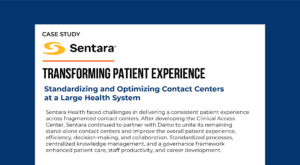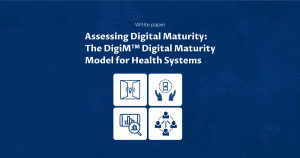Digital Front Doors – the New Battleground for the Healthcare Consumer’s Attention
There is a huge opportunity now for the likes of CVS-Aetna and Walgreens to disrupt the status quo and win over disaffected healthcare consumers. Healthcare providers need a new approach to the primary care experience.
Something’s afoot in the world of healthcare consumerism. A raft of new solutions has recently come into the market, aimed at capturing the first point of contact with consumers in need of healthcare services. Consider these:
- Walgreens has launched a digital marketplace, Find care that offers a slew of healthcare services, from lab tests to virtual consults to consumers. Many of these services are provided in partnership with digital health companies such as MDLive and Propeller Health, and others with traditional healthcare providers like AdvocateAurora Health and LabCorp. In all cases, prices are listed for the services.
- Health Insurance major Anthem has partnered with digital health startup K Health to offer symptom triaging services to over 40 million members. A newly created app will provide members with the option to run their symptoms past an AI-enabled triage algorithm and have an option to text directly with providers for treatment advice. The app already has over 1.3 million users.
All of this suggests a significant shift in how consumers gain access to care. Traditional providers have long seen challenges with access issues, ranging from multiple points of access to lack of adequate and timely access. Access issues have a double-whammy effect – there is the immediate loss of revenue arising from the patient being unable to access care, but the second, and more disturbing fact for providers is that this discontinuity is an opportunity from emerging non-traditional providers to win consumers away. Once consumers have switched modes to a new way of accessing care, traditional providers have all but lost control of the primary care experience and are now reliant on the new merchants of healthcare consumerism.
The story doesn’t end there
CVS-Aetna, the giant healthcare company that emerged from the merger last year of VCS and Aetna, has launched a series of HealthHubs in its walk-in clinics ( which it refers to as the “new” front doors for health care), where patient navigators steer healthcare consumers to a series of available services, including in-person consultations with primary care physicians in the store.
While this one doesn’t sound at first like a “digital” front door, consider this: the access to the combined patient health records of CVS and Aetna means that their consumers’ healthcare records can be analyzed and their needs and care gaps identified proactively to reach out and schedule services.
How are traditional providers responding to this threat? Many leading healthcare providers have risen to the challenge.
- Carolinas-based Atrium Health has launched a digital front door where patients can look up their symptoms in a symptom tracker, decide how they want to access care (virtual, eVisit, or urgent care), and make the decision after looking at the prices for the various options. Atrium Health has also pioneered the use of voice-enabled healthcare services based on Amazon’s Alexa.
- Washington-based Providence St Joseph and Illinois-based AdvocateAurora Health have launched chatbot services that work as symptom triagers, helping consumers analyze their symptoms through a bot interface and directing them to their care options.
My firm’s research on digital health initiatives by health systems suggests that while many health systems have invested in telehealth capabilities, the majority of cases these translate to online Express Care or Telestroke services. These capabilities are somewhat different from the kind of digital front door experiences that consumers need today (and I’m setting aside digital marketing efforts to raise awareness and drive inbound inquiries, which falls outside the purview of care delivery).
Consumers need help figuring out what their symptoms could mean, which helps avoid the effort and delays in getting through to the right provider for advice. Today, the vast majority of consumers are relying on “Dr. Google,” which is not exactly the recommended standard of care. My own recent experience during a bout of flu where I struggled to get a response from my provider to my messages underscores the gaping void that the traditional healthcare system has created for consumers seeking access to timely and appropriate care.
Consumers like myself will be compelled to seek alternatives to traditional healthcare relationships as dissatisfaction with the status quo takes hold. We have seen this movie play out in other sectors, notably retailing, banking, and securities markets. However, there is a big difference in healthcare. The lack of portability of healthcare data from one provider to another is a significant challenge for consumers looking to transition between providers of their choice seamlessly.
Engaging with multiple providers comes with downsides in the form of discontinuities in the longitudinal medical records of patients. Big tech firms, notably Apple, are trying to address the gap through a comprehensive approach to building a new healthcare technology infrastructure that ensures not only that records are complete and current, but also accessible to the consumers to whom they belong.
There is a huge opportunity now for the likes of CVS-Aetna and Walgreens to disrupt the status quo and win over disaffected healthcare consumers. Notwithstanding innovative consumer-facing solutions from progressive health systems such as Providence and Atrium, many health systems are choosing to stay with the status quo, confident in their brand loyalty among their patients. However, if the experience in other sectors is anything to go by, healthcare is a hair’s breadth away from seeing its most cherished relationships disrupted forever.
Originally published in CIO.com















